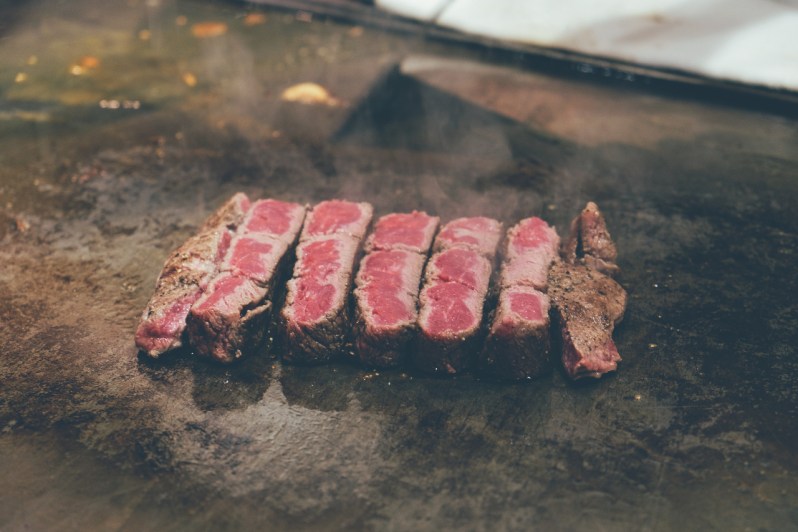Over the last few years, consumer demand for grass-fed beef has grown significantly, reaching a market valuation of $12.4 billion in 2023. By 2033, the grass-fed beef market is projected to reach nearly $20.4 billion — but why? What’s all the hype about grass-fed beef?
Grass-fed beef can be found everywhere today, from Whole Foods and ALDI to major wholesale clubs like Costco and BJ’s. For the average consumer, it may just seem like this beef comes with a price tag that is too high and might just be another health craze that will quickly pass. However, the growing demand for grass-fed beef is due to its exceptional nutritional value that simply cannot compare to grain-fed beef. Below, we’ll break down what the grass-fed beef hype is all about and why it’s worth the spend.

What is grass-fed beef?
To understand the hype around grass-fed beef, it’s first important to understand what it truly is. As defined by the U.S. Department of Agriculture (USDA), grass-fed beef means that the cow is fed grass and forage for its entire lifetime, except milk in its early days. This means the cow is not fed any grain or grain byproducts, such as in grain-fed beef, and the animal is allowed to roam freely on the pasture.
Most conventional beef you’ll find on grocery store shelves is considered the grain-fed variety. While all cows are weaned off milk as babies, grain-fed cows are then transitioned to be fed supplemental grains. These grains, such as soybeans or corn, help these cows to quickly gain weight, which equates to quicker, more efficient profit for meat companies. Cows that are grain-fed have higher energy levels and quickly reach their desired weight, making this an ideal feed for meat companies.
While this may seem like a no-brainer from the farmer’s perspective, the meat from a cow that was fed grains vs. the meat from a cow that was fed grass differs greatly. Although they may look the same to the naked eye, the nutrition profile of each of these meats is unique.

Nutritional profile of grass-fed beef
Grass-fed beef contains more vitamins and nutrients when compared to grain-fed beef, providing more nutritional value in each bite.
Vitamin and nutrient content
Beef, in general, is high in both vitamin E and vitamin A. Research studies that have compared grain-fed beef to grass-fed beef have found that grass-fed products contain more of both vitamins. Vitamin E acts as an antioxidant in the body, helping to protect cells from oxidative stress and damage, whereas vitamin A helps support eye health and boosts the immune system.
Higher in CLA
Grass-fed beef also contains high levels of conjugated linoleic acid (CLA), a type of healthy fat that has been shown to help our bodies fight against cancer. Studies have found that grass-fed beef contains up to two times more CLA when compared to conventional beef. Conjugated linoleic acid might also help fight inflammation, promote healthy weight management, and improve blood sugar control.
Omega-3 fatty acids
Studies have shown that grass-fed beef contains more omega-3 fatty acids when compared to grain-fed beef. Omega-3 fatty acids are important for preventing and protecting against chronic diseases, such as stroke and heart disease. Each serving of grass-fed ground beef was found to have about two to six times more omega-3 fatty acids than grain-fed beef. According to the USDA, a 3-ounce serving of grass-fed ground beef contains 0.015 grams of omega-3 fatty acids, whereas conventional beef contains only 0.003 grams of -mega-3 fatty acids.
Consuming enough omega-3 fatty acids in your diet is important to counteract the high levels of omega-6 fatty acids that are often found in the standard American diet. Most American diets contain 14 to 25 times more omega-6 fatty acids than omega-3’s, leading to inflammation and worsening other chronic health conditions. Consuming grass-fed beef instead of grain-feed can help you balance out the ratio of omega-3 to omega-6 fatty acids within your body.

Other problems with grain-fed beef
Beyond the different nutritional profiles of grain-fed vs. grass-fed beef, there’s another major problem with conventional beef. Many cows on grain diets are also given antibiotics and growth hormones to make them gain weight as fast as possible. The food that makes up a grain-fed diet, such as field corn or soybeans, often has genetically modified organisms (GMOs). In turn, the chemicals used on these crops then end up in the beef, which also end up in our bodies when we consume it. Choosing grass-fed beef (which is usually also organic) prohibits the use of GMOs and growth hormones.
Many people also choose grass-fed beef as it tends to be a more humane choice. Cows that are fed grass are allowed to roam freely and graze in their natural state. On the other hand, grain-fed cows are often treated poorly and confined to tight feedlots. These feedlots often contain hundreds or even thousands of cows packed within very tight spaces that leave little room to roam around.

Grass-fed beef is more than just a trend
All in all, grass-fed beef is more than just a trend. The research suggests that grass-fed beef contains a better nutritional value, providing more nutrients in every meal. With so many meat delivery options like ButcherBox to choose from, you don’t even need to go to the store to find high-quality grass-fed beef. If you care about making humane choices and getting the most nutrition in your meals, opting for grass-fed beef is a smart choice.




